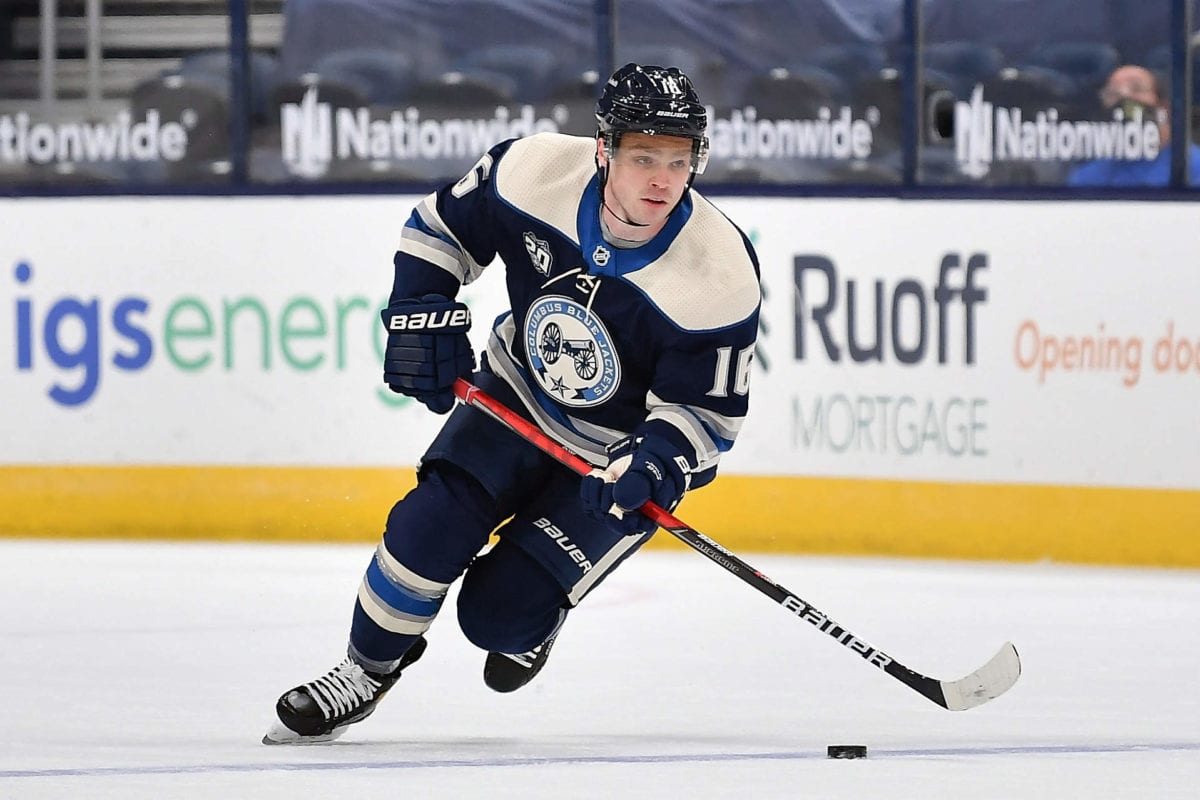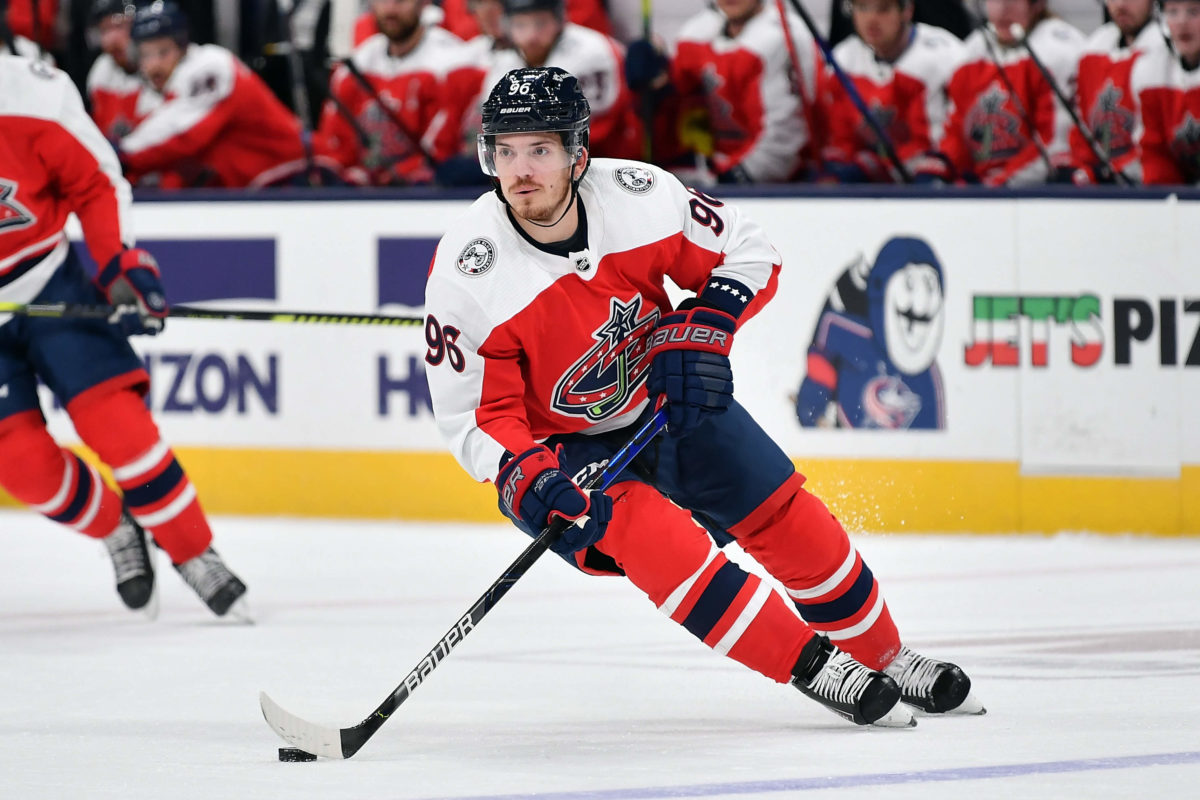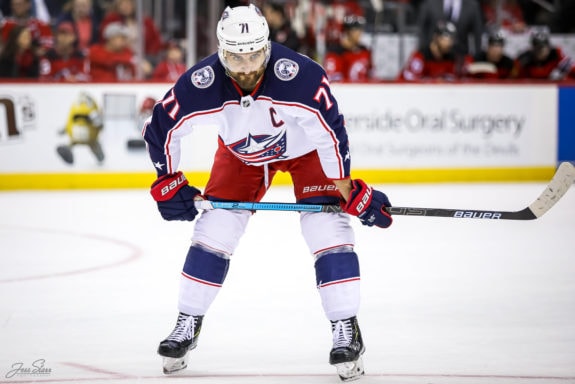Since last October, the Columbus Blue Jackets have made several trades. With the team entering a rebuilding period, some of the moves they made in the past year are under the microscope from fans and analysts alike. This piece will look back at five of the Blue Jackets’ major trades in the last year. Each trade will be analyzed and graded based on how draft picks were used, player performance, and possible future impact.
Grading the Blue Jackets’ Trades
With Columbus starting with a new coach and many new faces, the way the trades work out could make or break the team’s next few seasons. Below is the analysis and grading of the major trades that were made since last October.
Oct. 7, 2020, with the Montreal Canadiens: C+
The first trade we will look back at was last fall when Columbus traded right winger Josh Anderson to the Montreal Canadiens for center Max Domi and a third-round pick in the 2020 NHL Draft. While both Anderson and Domi scored 24 points (Anderson with 17 goals and seven assists in 52 games played, Domi with nine goals and 15 assists in 54 games played), this trade did not work out how the Blue Jackets would have liked it.
Domi failed to provide the boost to the center position that the franchise was hoping for. He struggled immensely at a particular weak point of the team, especially in the faceoff circle, finishing below 50 percent with a faceoff percentage (FO%) of just 48.5 percent.

With the extra third-round pick the Blue Jackets received from this trade, they selected defenseman Samuel Knazko, who has a big upside.
“The most important aspect of Knazko’s game is his skating ability, which is described by many to be among the best in the draft for a defenseman,” said Eugene Helfrick in Knazko’s draft profile. “This, combined with his great hockey instincts, allows him to stay a step ahead of the game and allows him to capitalize on a great pass or a smart shot on goal.”
Since Domi did not mold into the talent at the center position that Columbus needed, this trade receives the grade of C+ for now. If Knazko becomes the real deal and reaches his upside for Columbus, the grade could find its way into the B range.
Jan. 23, 2021, with the Winnipeg Jets: B
The second trade we will analyze was made on Jan. 23 when the Blue Jackets traded center Pierre-Luc Dubois and a 2022 third-round pick to the Winnipeg Jets for right winger Patrik Laine and center Jack Roslovic.
The Dubois and Laine portion of the trade was about even. Dubois had 20 points (eight goals, 12 assists) in 41 games played with Winnipeg, and Laine had 21 points (10 goals, 11 assists) in 45 games played for Columbus, including six power-play points. Laine did have struggle for a majority of the 2020-21 season compared to his usual play. Most of that can be attributed to the Blue Jackets’ lack of a center that could feed him the puck. The team simply did not have the personnel to match Laine’s game, something they will seek to fix this offseason.
The big surprise of this trade was Jack Roslovic. The hometown-native quickly became a favorite in Columbus. He recorded 34 points (12 goals, 22 assists) in 48 games played. He showed offensive creativity and skills at many points this season. Considering how young he is, he has much potential to reach for the Blue Jackets.

This trade gets a B grade with Laine and Roslovic’s combined 55 points for Columbus compared to Dubois’ 20 for Winnipeg. This trade could find its way to an A grade under two conditions. One, Laine gets the correct personnel, improves his play, and signs a long-term deal. Two, Roslovic improves his faceoff ability and increases his 39.1 FO% by around 20 points and becomes a solid center for Columbus in the next few years.
April 9, 2021, with the Toronto Maple Leafs: A-
The third trade to receive an analysis occurred on April 9 with the Toronto Maple Leafs when the Blue Jackets traded center Riley Nash for a 2022 seventh-round pick (sixth-round pick if he played 25 percent of Toronto’s postseason games).
This trade worked out great for Columbus. Nash played 25 percent of the Maple Leafs’ playoff games, and the seventh-round pick became a sixth-round. They traded a player who was out for the rest of the regular season and that was going to become an unrestricted free agent (UFA) at the end of the season in return for that draft pick. With the Blue Jackets entering a period of rebuilding, they need to maximize the value of all of their assets, and they did just that with Nash in this situation. This trade gets an A- grade.
April 10, 2021, with the Tampa Bay Lightning: A+
The fourth trade the Blue Jackets made that we will look back at was made on April 10 with the Tampa Bay Lightning, where Columbus traded defenseman David Savard for a 2022 third-round and 2021 first-round pick.
The Blue Jackets may have lost 597 games of experience on defense (a position that struggled in 2020-21) with this trade, but Savard greatly exceeded his trade value. A first-round and third-round pick for a player who is going to be a UFA at the end of the season was a great deal.
Much like Nash, the Blue Jackets got the most value out of their asset in this case. Due to the draft picks being higher in the draft compared to the Nash trade, this trade gets an A+ grade.
April 11, 2021, with the Toronto Maple Leafs: A+
The last trade we will focus on was on April 11 when Columbus traded their captain, left winger Nick Foligno for a 2022 fourth-round and 2021 first-round pick.
Much like the Savard trade, the Blue Jackets lost a very experienced player who had 599 games played with Columbus. They also lost an irreplaceable amount of leadership in the locker room and community since he was the captain. However, considering that he is also a UFA this offseason, the deal was too good for the Blue Jackets to pass up.

The fact that they received a first-round and fourth-round pick makes this trade invaluable for the future. Since the team got the maximum value out of Foligno on this trade, it gets an A+ grade.
The Blue Jackets’ Future From These Trades
These trades are extremely valuable when it comes to the future of the Blue Jackets. After these trades, they have three possible pieces in their future with Laine, Domi, and Roslovic. Add that with the promise that Knazko brings, and they may hold four future stars in the organization.
Lastly, Columbus now holds many future draft picks. Some of those will be used to build for the future, but most likely, some will be on the move. The Blue Jackets will most likely keep their own first-round pick since it is the highest pick, but one or both of the other first-round picks could be moved with a goaltender or Seth Jones to bring in a piece to help Laine and fill their need of a center.
After these trades, the Blue Jackets find themselves in shape to have a quick and effective rebuild if they choose to do so. Overall, these trades put the team in a good position for the future.